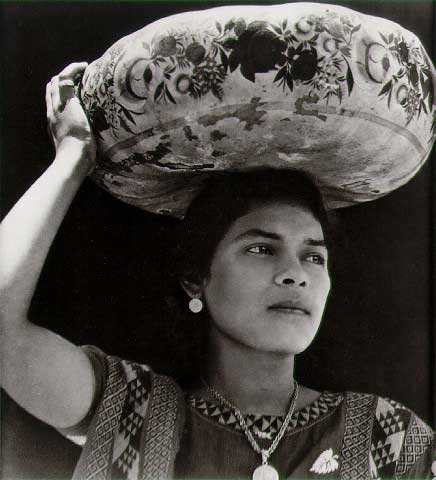Until the 25th of September the National Gallery Jeu de Paume exhibits Shadow Hunter, a retrospective of the photographic work of Santu Mofokeng. The exhibition of the most important photographer in South Africa corresponds to the work that took place at the end of the Apartheid in Johannesburg and the beginning of the political transition.

The retrospective, commissioned by Corine Diserens, is organized around close to 200 photographs and slides, as well as texts and documents which refer to his work and others that are part of his writings.
Santu Mofokeng was born in Johannesburg, South Africa, in 1951. Without any academical formation, he began in photographic informality of the streets of Soweto, making it into a job that would allow him to capture the political process that the country was going through in the 1980s in a privileged way.
Soweto is located 24km away from Johannesburg and was built to transport the people of black race that lived in white race areas during Apartheid. The overcrowding and oppression exerted by the State against Soweto were the basic ingredients of the rebellion of 1976, when the Government announced that the education would be in Afrikaans and not in English, knowing that it was a language that the population didn´t know.
The revolt was a product of the indignation for the abuse and condemnation of a miserable life that the white state imposed to the black race majority. This episode which finished with 575 dead and hundreds of arrested people who were tortured and an uncountable amount of injured, was captured by the lense of Mofokeng.
Belonging to the collective of antiracist photographers Afrapix, in which many important photographers from around the world belonged to support the fight for the human and civil rights of the black majority in South Africa, worked incessantly for the racial cause. That´s where the axis to his work was founded: memory.
Shadow Hunter is the capture of images of a society that searches for the future transporting the load of the past, where the memory and forgetfulness fight not to be buried underneath so much pain. That´s the pain that Mofokeng captures in the shadows. The dead, the disappeared, the ones that suffered in the concentration camps and in the prisons, those who aren´t in the new history pages, that history written with the suffering of which only shadows remain.
His photographic voyage begins in his father´s house in Soweto. That world of poverty and marginality that shaped his life and the work of the photographer. It´s followed by spiritual places, prisoner camps, cemeteries and the contradictions on the streets of Johannesburg.
The disappearance of Apartheid and the emergence of a modern society, exposed to the changes produced by the cultural and economical globalization, has unleashed political and social processes that transform memory, and it´s that poetic and painful memory that´s represented in his work on today´s South Africa.
Other works that Mofokeng has done are about the memory of the German concentration camps during World War 2.
For more information: http://www.jeudepaume.org/index.php?page=article&sousmenu=10&idArt=1398&lieu=1
 Nancy Guzman
Nancy Guzman
To see the exceptional work of this South African photographer, you only have to come to the Jeu de Paume Museum if you´re in apartments in Paris enjoying the beauty of this city.

 English
English Translated by: aleixgwilliam
Translated by: aleixgwilliam


